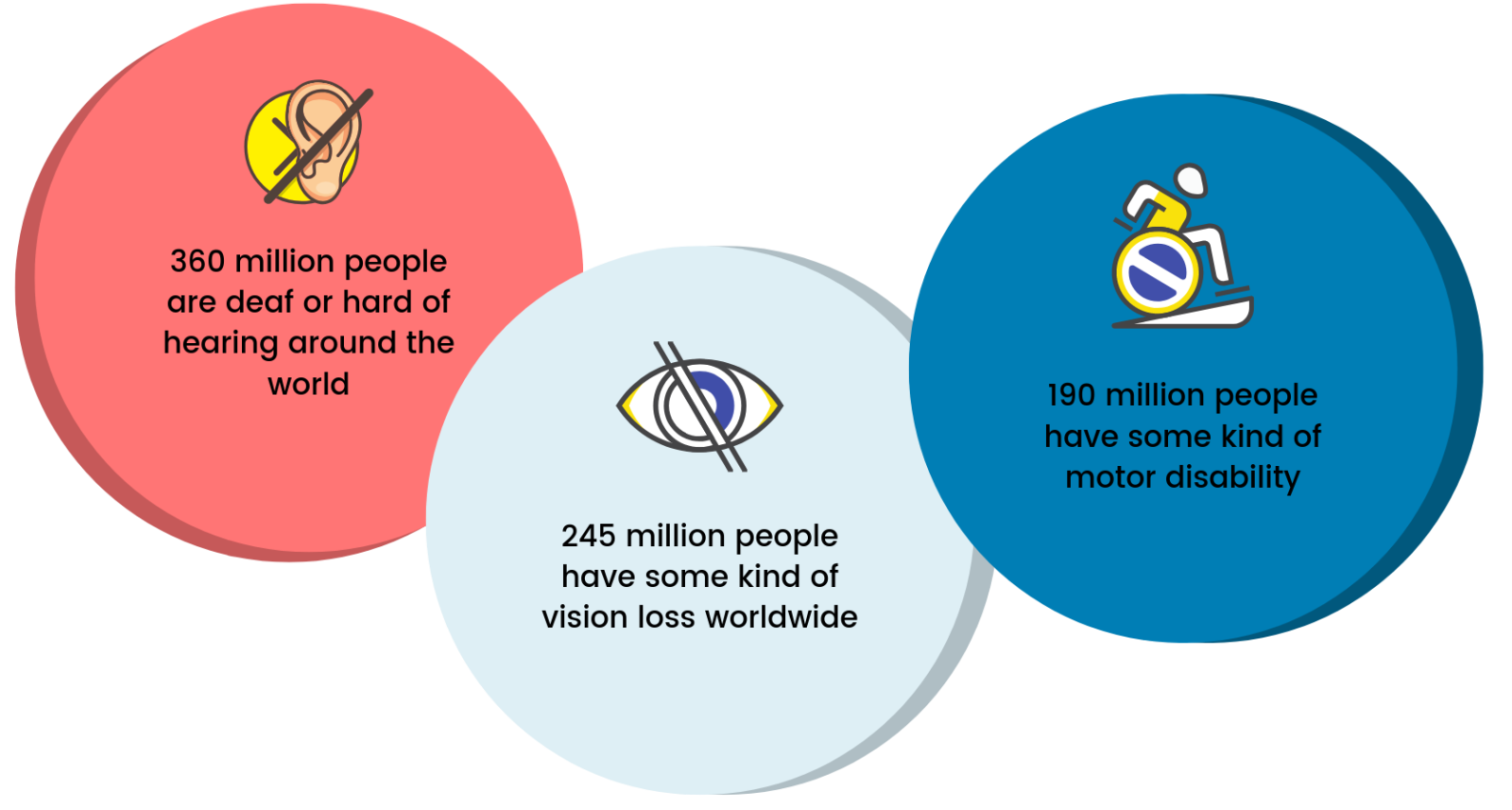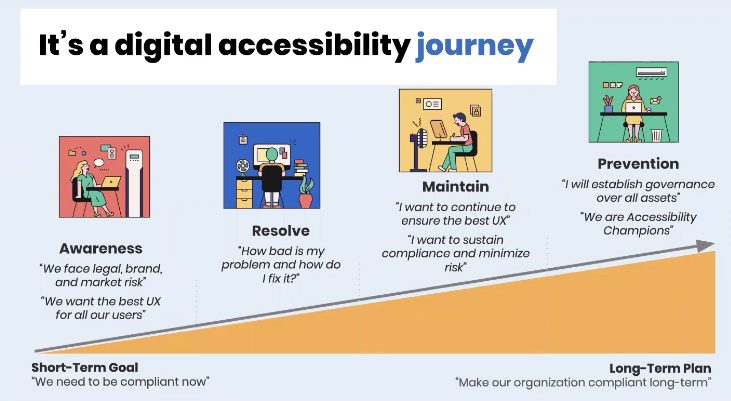Getting Buy-In for Accessibility at Your Organization
Updated: June 1, 2021
In the webinar, “How to Get Buy-In for Accessibility at Your Organization”, 3Play Media’s CEO and co-founder, Josh Miller, and Level Access’ VP of Strategic Consulting Services, Beth Crutchfield, discuss different methods to increase support for accessibility at organizations in order to run efforts, transform practices, and create a more accessible business.
In this wrap-up, we’ll break down the most important takeaways from the webinar that you can easily apply for accessibility at organizations.
Research-Backed Reasons to Invest in Accessibility
Accessibility is providing an equivalent experience to everyone, including people with disabilities. This can refer to physical locations, but it also applies to online spaces and electronic information as well. Online content and design must provide the most convenient and all-encompassing experience as possible.
In the 2019 State of Captioning Report, we learned that cost and resource time were the two top barriers to creating accessible content.
So how do you show the value of accessibility and convince decision-makers at your organization that it’s worth the investment?
When content is inaccessible, it excludes more than 1 billion people who have a disability around the world.
Most of the world has an online presence. You can shop, watch shows and films, and even find your life partner online.
Unfortunately, much of the content is not accessible. If someone with a disability runs into an inaccessible website, they leave because they can’t access it.
71% of people with disabilities leave a website immediately if it’s not accessible
A recent study by the RoD group showed that $1 trillion in annual disposable income exists from people with disabilities, which becomes missed out if your site or content isn’t accessible.
Additionally, video content is on the rise. There’s more video uploaded to the web in a staggering one month than there was television created in three decades! Captions are important to make your video comprehensible without sound. A study by Facebook showed that 41% of videos are incomprehensible without sound or captions. That means if someone doesn’t have headphones are there aren’t captions, they’re not watching your video.
There are legal requirements for accessibility that are worth touching upon.
- Rehabilitation Act of 1973: It has two sections that impact video accessibility in particular. Section 504 requires equal access for individuals with disabilities. Section 508 requires federal communications information technology to be accessible.
- Americans with Disabilities Act (ADA): Title II of the ADA prohibits discrimination by public entities and Title III prohibits discrimination by places of public accommodation.
- 21st Century Communications and Video Accessibility Act (CVAA): applies to online video that previously aired on television. Video must be captioned, including clips and montages.
It’s worth noting that in the last couple of years, the number of web accessibility lawsuits has increased dramatically. It increased bt 181% from 2017 to 2018.
These are happening across the country across all industries. It goes to show that there is serious importance in making content accessible.
Building Organization-Wide Support
Sometimes it’s difficult to get teams and stakeholders to participate in accessibility at organizations. Before you get started on rallying for support, it’s important to ask yourself some key questions to help assess the current start.
- Am I sufficiently educated on the topic of accessibility?
- What tools does the organization need to be successful?
- Should we engage the services of a third party?
- Do we have a budget?
- Do we have the necessary resources to support this effort?
- Have we looked into accessibility before? Do we have previous experience?
Once you understand your organization’s current state, the focus should then be on securing internal buy-in and support.
It’s important to understand that the journey to accessibility can’t be done alone. Getting the support at the highest level is essential because you have the most senior executives bought and participating in, which helps to avoid struggles down the line in terms of resources and funding.
Getting buy-in from your organization may not always be easy, so setting realistic goals is helpful when engaging with senior leaders.
Incorporating Accessibility into the Budget
While some organizations are able to budget adequately, it’s not always the case for everyone. Many organizations may need to look for outside sources beyond their department to finance accessibility efforts. Some options for raising funds for accessibility could be:
- Apply for grants
- Find funds through other budgets
- Create an accessibility grant at your institution
- Prioritize your projects
Watch the full webinar below 👇
Further Reading

Subscribe to the Blog Digest
Sign up to receive our blog digest and other information on this topic. You can unsubscribe anytime.
By subscribing you agree to our privacy policy.








